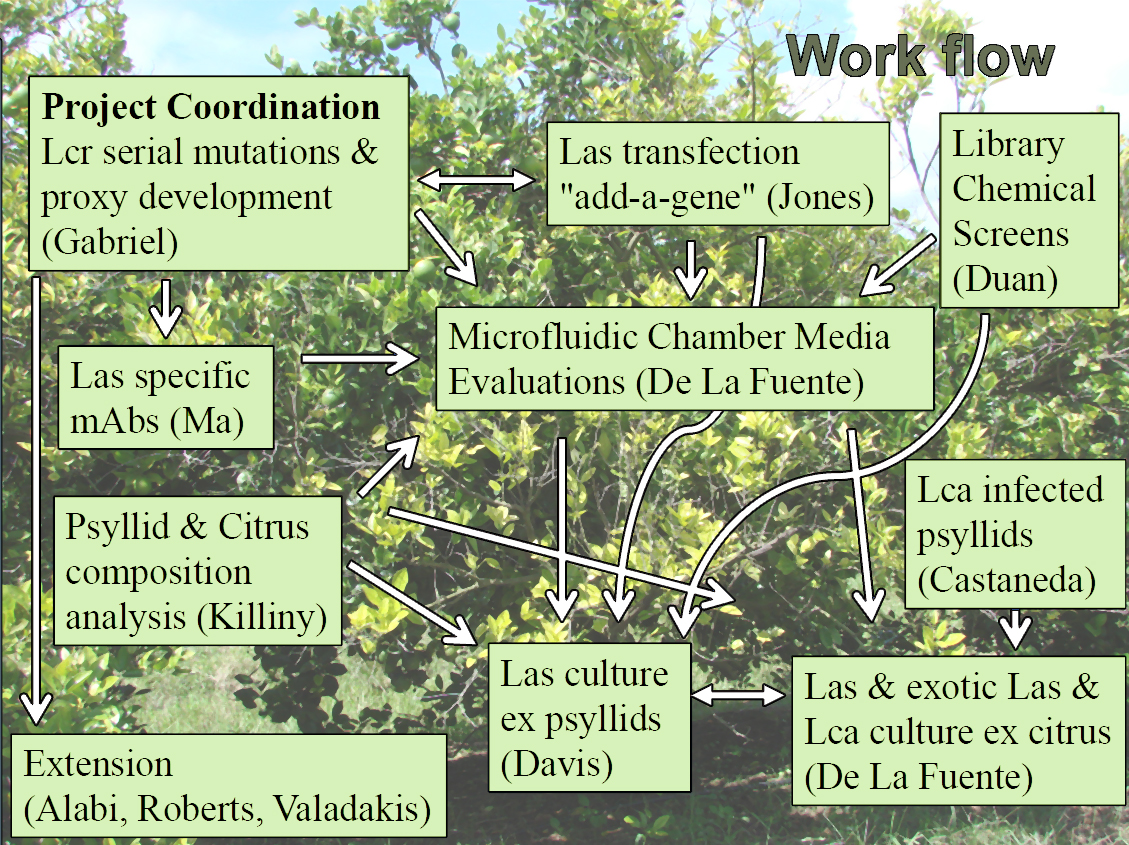

Significant progress has been made identifying and confirming the multiple genetic limitations that are inherent to Ca. Liberibacter asiaticus (Las). The bacterium has a highly degenerate genome and a few special gene additions that allow adaptation to a parasitic lifestyle in both psyllids and citrus, but to date disallow growth outside of living cells and tissues, except transiently. Some of these limitations can be compensated by additions to culture media. Fortunately, Liberibacter crescens (Lcr), a different species of the same genus and with a slightly less degenerate genome, can be cultured, although it is not pathogenic, which limits its utility in testing hypotheses regarding Las virulence and pathogenicity. Nevertheless, genomic comparisons and development of genetic and microbiological tools to manipulate Lcr have facilitated progress in Las culturing, the highlights of which are 1) incrementally improved culture media for Las, including buffers, specific additives and particular Las gene regulators, thereby lengthening transient culture periods; 2) partial success with Las co-cultures; 3) success in feeding media to psyllids and providing a likely pathway for re-introduction of transiently cultured Las into psyllids and citrus, and 4) isolation of a potential phage delivery system for adding missing genes to Las.
